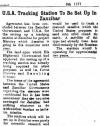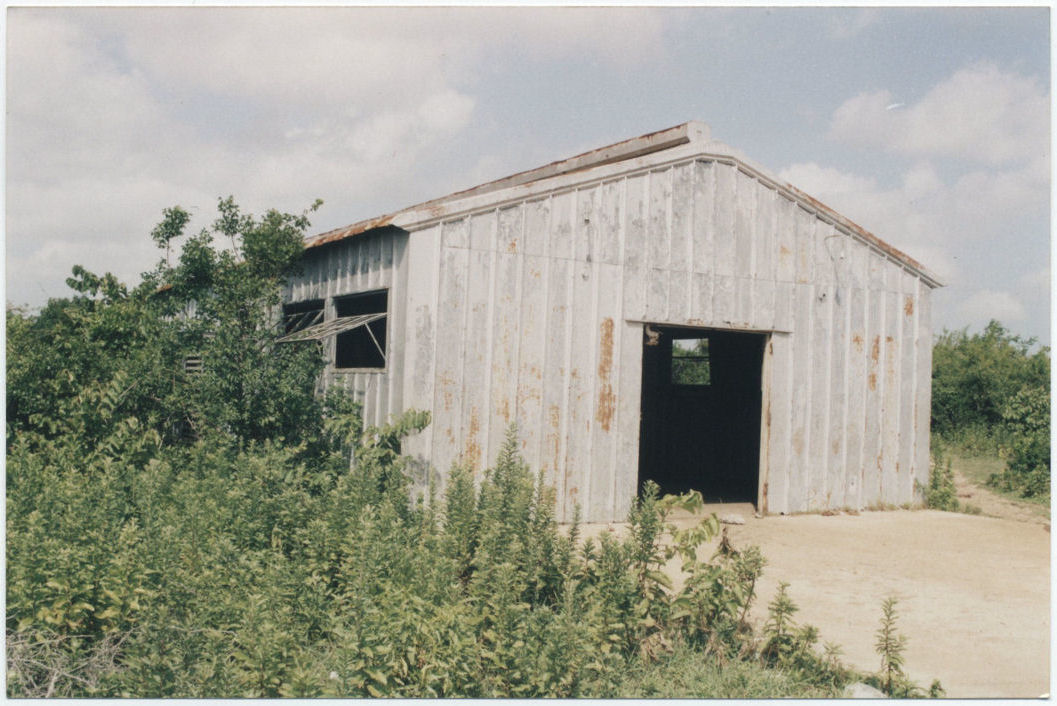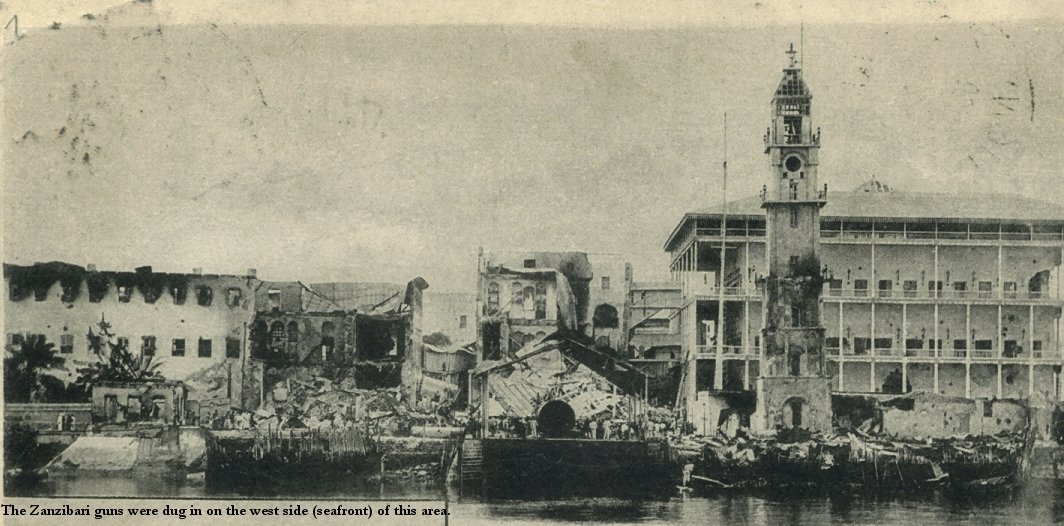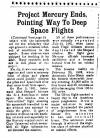For Friends of Project Mercury
The Zanzibar tracking station was part of the first real-time global communication system ever built. Prior to 1960 such long-distance communication was done via a network of land based and undersea telegraph cables. Though revolutionary in it's day that system did not offer the reliability or real-time capacity that was needed to track orbital spacecraft. When the United States decided to launch manned spaces flights it soon became apparent that a massive project was needed to survey, equip and build a network of tracking stations around the world. Despite the need to obtain approval from seven different countries to build these sites, this project, now named project mercury, was completed in only two years.
An early decision regarding the safety of the astronauts and the possible need
to control the spacecraft from the ground if they became incapacitated
established the number of sites needed. That decision was that there should
never be more than ten minutes flying time between communication and control
from oneground station to the next. That decision meant that a total of
16 tracking stations were needed. Two were to be on ships at sea, 14 were on
land half of them in foreign countries.
These sites were:
- Cape Canaveral
- Bermuda
- Gran Canaria (one of the Canary Islands)
- An Atlantic ship
- Kano (Nigeria)
- Zanzibar
- An Indian Ocean ship
- Muchea (in Western Australia)
- Woomera (in Southern Australia)
- Kanton (an island in Polynesia)
- Hawaii
- California
- Guayamas (Mexico)
- White Sands (New Mexico)
- Corpus Christi (Texas)
- Eglin AFB (Florida)
 In Zanzibar the Sultan was one of the first leaders to declare his support
for Project Mercury and dedicated land for the site near the center of the main
island at a place named Tunguu.
In Zanzibar the Sultan was one of the first leaders to declare his support
for Project Mercury and dedicated land for the site near the center of the main
island at a place named Tunguu.
There were actually two Project Mercury sites on Zanzibar. The manned site at Tunguu and an unmanned transmitter site on the east coast near the town of Chwaka.
These tracking stations were operated and maintained year round by technicians working for the Bendix Radio corporation, an American company that had a contract with the US government. Bendix operated other similar sites around the world with their employees rotating between these sites occasionally. NASA employees and sometimes an astronaut in training would visit the sites only when there was a mission in progress.
For the American technicians Zanzibar was a favored assignment, it was one of the few foreign sites where families were allowed to accompany the workers. It was considered a safe environment and there had an American diplomatic Counsel on Zanzibar for over one hundred years. The resident Americans and their family members numbered between 50 and 60 individuals at any one time. They lived in or close to Zanzibar City and commuted from there to the Tunguu site on what were then excellent roads. Some of the workers were radio aficionados, they established the first shortwave broadcasts from Zanzibar and even donated and installed radio equipment in the wards of the city hospital so that recuperating patients could listen to local news and music.
When the Zanzibar revolution occurred in January 1964 there was fighting throughout the Island. The resident American workers were fearful for their families. Though no American was harmed on the day of the rebellion there was great uncertainty about what would happen next. In the 1963 elections some politicians had expressed opposition to the Mercury site, falsely claiming that it was a military installation that could be used to direct missiles against the people of Zanzibar. Some of these same politicians were now in control of the country. The Americans therefore organized a secret convoy of vehicles to pick up the scattered technicians from their homes and bring them to a central location, the Africa House Hotel, near the city harbor. On the day after the revolution an American warship, the USS Manley (DD-940) steamed into Zanzibar harbor and that ship's Executive Officer, Lieutenant Commander Joseph E. Murray, Jr. negotiated an agreement with the revolutionaries to allow the Destroyer to send small boats ashore to evacuate the American citizens and some others who worked at Project Mercury. A total of 91 people were then swiftly and safely evacuated, 54 Americans and 37 allied nationals.
Not all Americans left on the Manley however. Some American diplomats remained and a skeleton crew mothballed the Mercury site while the politicians wrangled over it. However the the end was never really in doubt. The last Mercury flight, Faith 7, had already been completed before the Zanzibar Revolution and the last planned mission, Freedom 7-II had been scrubbed as unnecessary at a time when NASA was already looking ahead to the new two man Gemini missions.
The Revolutionary government was angered over delays by western countries to recognize the new government and President Karume was swinging toward the east, (East Germany was the first country to formally recognize the Revolutionary government.) Three months after the revolution Karume therefore announced that the Mercury site would be permanently closed before the end of April, 1964. The Zanzibar site would not have a role in the Gemini program. Thus ended the Zanzibar Mercury story.
The Tunguu site now stands abandoned, unmarked and rusting, the main building slowly being dismembered for it's aluminum skin.

The American vice counsel at the time of the revolution, Don Petterson, has written an excellent book about his service during that time, all those interested in more information on the end of the Zanzibar Project Mercury story should obtain a copy.

By Torrence Royer








































